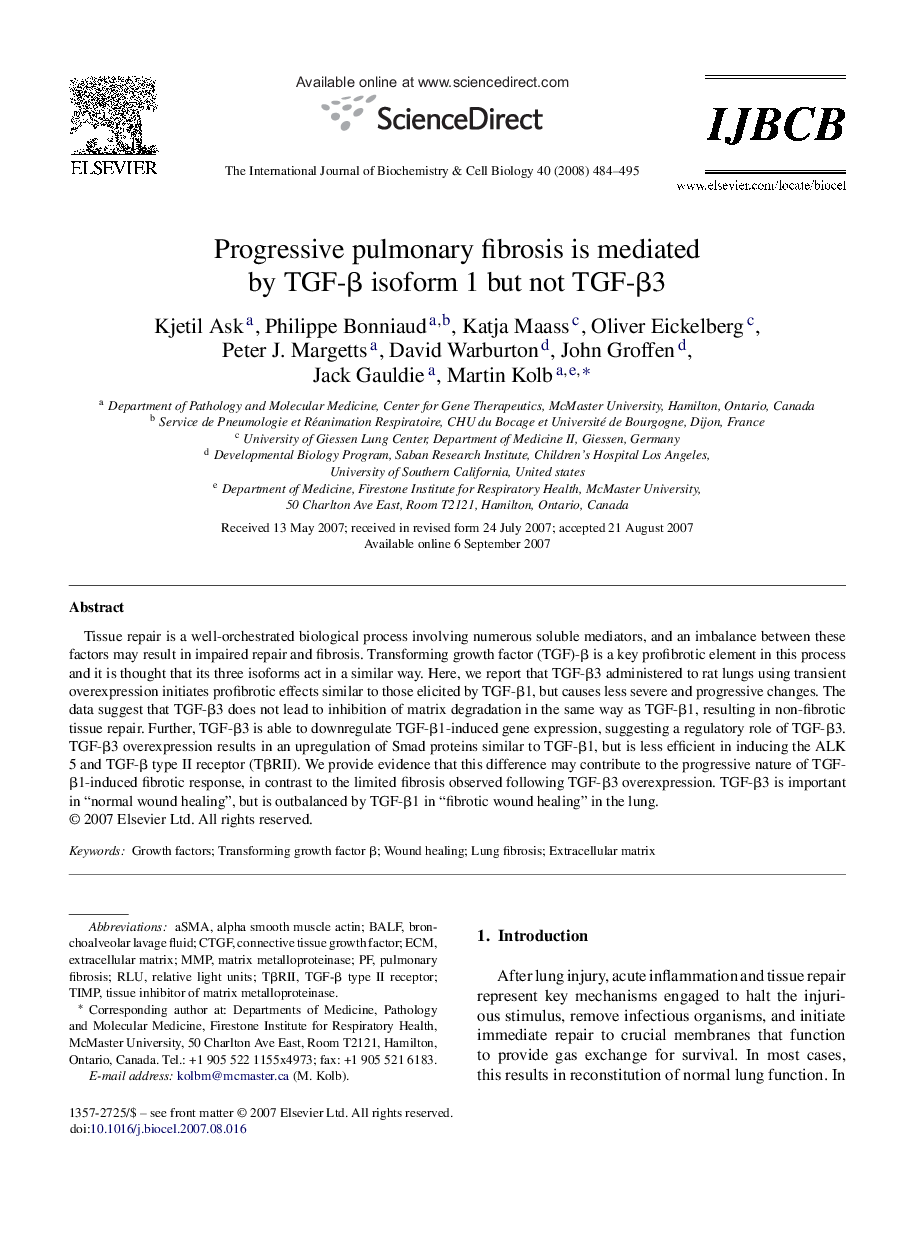| Article ID | Journal | Published Year | Pages | File Type |
|---|---|---|---|---|
| 1984807 | The International Journal of Biochemistry & Cell Biology | 2008 | 12 Pages |
Tissue repair is a well-orchestrated biological process involving numerous soluble mediators, and an imbalance between these factors may result in impaired repair and fibrosis. Transforming growth factor (TGF)-β is a key profibrotic element in this process and it is thought that its three isoforms act in a similar way. Here, we report that TGF-β3 administered to rat lungs using transient overexpression initiates profibrotic effects similar to those elicited by TGF-β1, but causes less severe and progressive changes. The data suggest that TGF-β3 does not lead to inhibition of matrix degradation in the same way as TGF-β1, resulting in non-fibrotic tissue repair. Further, TGF-β3 is able to downregulate TGF-β1-induced gene expression, suggesting a regulatory role of TGF-β3. TGF-β3 overexpression results in an upregulation of Smad proteins similar to TGF-β1, but is less efficient in inducing the ALK 5 and TGF-β type II receptor (TβRII). We provide evidence that this difference may contribute to the progressive nature of TGF-β1-induced fibrotic response, in contrast to the limited fibrosis observed following TGF-β3 overexpression. TGF-β3 is important in “normal wound healing”, but is outbalanced by TGF-β1 in “fibrotic wound healing” in the lung.
